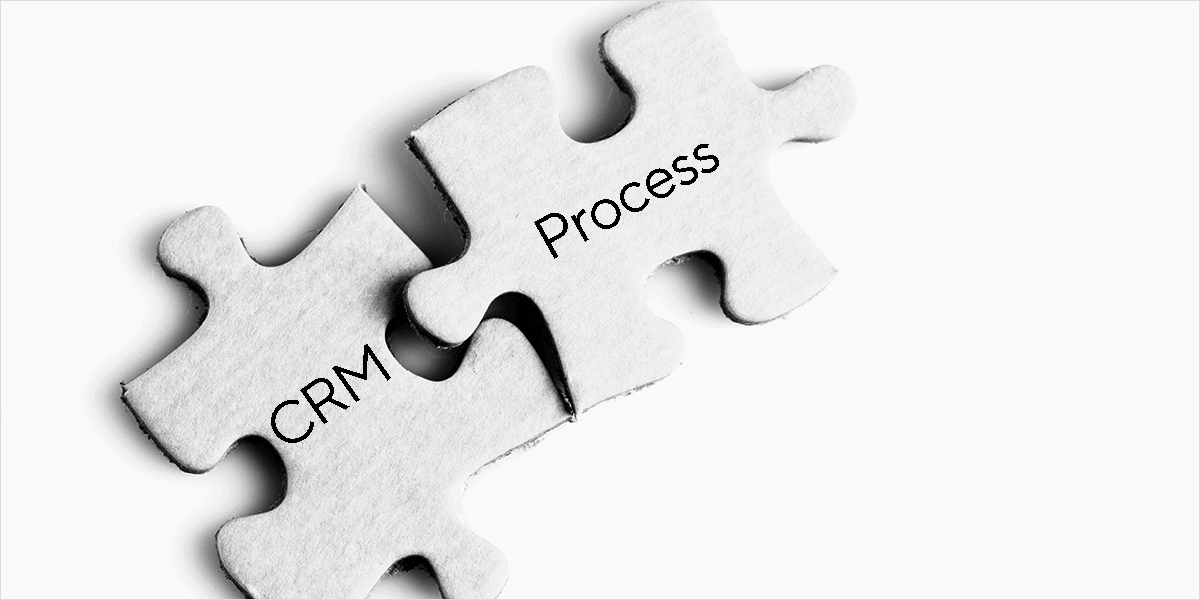Best Practices
The CRM process is flawed. Here is why.
Countless businesses operate under the assumption that they’re maximizing the CRM process implemented in their companies even if it may not be fully optimized to support their organization. You might be wondering, if something that ubiquitous doesn’t work, then what does?
A unified CRM is what’s required to thrive in a competitive landscape. The tools and data integration that it provides enable all of the company’s teams to seamlessly achieve synergy. They enable you to gain more insights and deliver a better experience.
Let’s dive deeper into the ways Insightly’s unified CRM software can have a transformative impact on your business.

What is the CRM process?
The CRM process can be best described as a business strategy that enables companies to better identify and interact with current and potential customers.
The idea here is to improve personalization for every customer interaction for enhanced customer experience and loyalty through data analysis and segmentation tools.
The same approach is also leveraged for prospects to convert them into paying customers. The five core steps of the CRM process signify a collaborative effort between the key departments in a company.

The 5 steps of the CRM cycle
1. Increase brand awareness
Typically the marketing team’s domain, the first step in the customer relationship management process involves introducing prospects to the business. It requires in-depth research on the audience’s demographics and interests.
Audience personas are created based on this market research to launch marketing campaigns that will theoretically have a greater chance of resonating with the audience.
2. Acquire more leads
The lead acquisition step is generally handled by the sales or marketing teams, or in some companies, both. This is essentially an effort to get prospects to engage with the business.
For example, the marketing team might offer downloadable content as a lead magnet to website visitors if they provide an email address. The sales team could then pull that data from the CRM to proactively target prospects to convert them into customers.
3. Convert leads into paying customers
Reps nurture leads to get them to convert to paying customers in this part of the sales process. They usually rely on lead-scoring data in the CRM to identify prospects that may have the highest probability of a sale and follow-up diligently with the lead.
Converting prospects into new customers is more of an art than a science. Sales reps must be skilled at building trust to inspire confidence in the leads to convert them into paying customers.
4. Retain customers with customer support and customer success
The job doesn’t end when the lead converts into a customer. Providing them with exceptional customer service is key to ensuring that they remain loyal customers.
The most widely used metric in customer service is CSAT or customer satisfaction. This data is used to track trends and identify and fix any issues impacting customer service.
5. Extract more value per customer with upsells/cross-sells
Upselling and cross-selling are great opportunities to proactively meet the needs of your customers by utilizing the data in the CRM. Companies should be mindful of the fact that customers’ needs may change over time.
This can be achieved by leveraging purchase data to provide personalized recommendations on the products and services that would provide further benefit to the customers.

Why the CRM process is flawed
Not all companies are created equal. The customer journey will always be different for every company. What works for one may not necessarily work for the other. This crucial fact tends to be overlooked by the CRM process.
What ends up happening is that the data gets compartmentalized in different tools. It turns into a mess as data discrepancies inevitably occur when all teams are not entering data into the same system.
This causes friction between various teams, including sales and marketing, since they effectively work in silos with complex ad hoc data sync processes.
Employees thus end up not trusting the data as it doesn’t provide them with a holistic view to make empowered decisions. They come to question the integrity of the data because it doesn’t appear to be cohesive and comprehensive.
They also find it difficult to achieve synergy with colleagues on other teams. Alignment across teams is crucial to close more customers and to improve retention.
A real-life CRM process example
A legacy CRM is effectively used as a suite of apps by a company. All of the sales, marketing, and service data is collected and managed in separate silos.
Thus, in reality, these so-called “integrated” CRMs are actually “assembled” CRM software where features and functionality were added over time in response to customers’ needs.
These solutions don’t fit the customer journey, particularly for companies that offer multiple products and services. The many teams that work on them use different tools that all do the same thing but don’t allow for seamless data integration. It’s impossible to have confidence in the data when it’s scattered everywhere.
There’s no continuity between the various tools in the CRM system, which prevents them from having an up-to-date and comprehensive view of the customer journey.
This will prevent, for example, the hardware and software sales teams in a company from leveraging the upsell/cross-sell opportunities that may exist with their customers simply because their data is all over the place.
Trying to fully integrate the scattered data is an expensive and time-consuming proposition, often making efforts to achieve that futile.

A better, adaptive approach to the CRM process
1. Start with the customer journey
The customer journey is a vital part of any CRM integration. Most solutions go about it the wrong way by forcing the customer journey to adapt to the CRM process.
Think about it, what works for a customer who wants to buy hardware might not work for someone who’s buying software. The same CRM strategy can’t be used for both.
It should be the other way around. The CRM process needs to be flexible enough to adapt to the customer journey. This increases the potential of converting leads and enhancing retention regardless of what stage of the sales pipeline they’re in.
2. Integrate with your existing tools
A single customer view that centralizes all customer data is a powerful tool to achieve synergy. Its integration with all of the existing tools that a business uses is also of vital importance.
Insightly AppConnect is a tool that allows for integration automation. Companies can use it to link and integrate Insightly’s unified CRM system with the other apps they use in their organization.
This allows for powerful new workflow automation between applications. AppConnect also features over 500 pre-built connections to popular business apps.
Even non-technical users can build seamless integrations by using its simple drag and drop interface without writing a single line of code.
3. Take a unified approach
Companies can both extract the most from their CRM implementation and improve customer service by adopting a unified approach that no longer relies on redundant tools and the compartmentalization of data in silos.
They can achieve synergy and data integration by unifying the marketing, sales, support, and project management on a single platform. All of the teams work together with a holistic view of the customers’ needs and expectations.
One of the biggest benefits of a unified solution for teams is that they can complete many tasks in one single system. They no longer have to switch between multiple applications to use various tools just to access data, a task that unnecessarily slows them down.
Insightly puts this unified approach at the heart of its CRM solution. Teams’ productivity increases through automation. With business intelligence built in, Insightly can also be used to create data visualizations and real-time data dashboards for unmatched visibility.

Insightly unifies your CRM process
Insightly empowers organizations and even small businesses to align sales, marketing, and support teams so that they have complete visibility over customer relationships. They can use that insight and knowledge to improve customer service.
Automatic lead routing ensures that leads are routed to the right person in real-time. With workflow automation, companies can create complex, multi-step business processes to better serve their customers. It can even execute custom business logic to sync with external systems from the likes of SAP and Oracle.
AppConnect ensures that the ecosystem of tools that a company uses every day isn’t disrupted; rather it’s integrated seamlessly with the CRM. AppConnect comes with more than 500 pre-built connections to the most popular business software apps. This makes establishing seamless integrations between the CRM and apps very straightforward.
Interested in learning more about how a real single customer view can enable you to improve customer retention and to better connect with them? Try Insightly for free to feel the unified CRM difference for yourself.